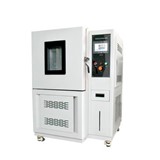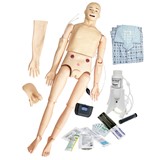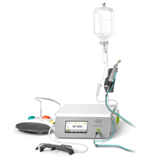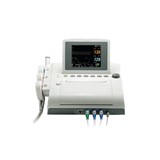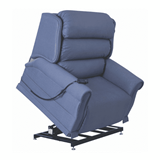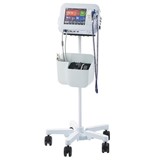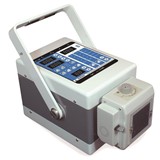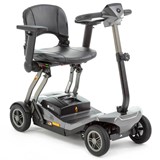Patient hoists are indispensable tools in healthcare settings, facilitating the safe movement of patients with limited mobility. To meet the evolving demands of patient care, continuous innovations in hoist technology are crucial. This discussion explores the latest trends and advancements in patient hoists, focusing on technical aspects and benefits while maintaining a professional and informative tone. By examining cutting-edge features like smart technology and artificial intelligence, we aim to highlight the transformative impact of these innovations on patient mobility and safety in healthcare facilities.
I. Smart Patient Hoists with Automated Controls and Safety Features
Smart hoists represent a significant advancement in patient mobility technology, integrating state-of-the-art features and automated controls. These cutting-edge devices are designed to streamline patient transfers while ensuring utmost safety for both patients and caregivers. Below, we delve into the key aspects of smart patient hoists and the benefits they offer:
Explanation of Smart Hoists and Automated Controls: Smart patient hoists leverage advanced technologies, including sensors, actuators, and microprocessors, to provide a more efficient and user-friendly transfer experience. These hoists are equipped with automated controls that significantly reduce the manual effort required from caregivers during patient lifts. With the push of a button or a simple command, the hoist can be adjusted for different transfer scenarios, making it easier for caregivers to handle patients of varying needs.
Benefits of Automated Features:
- Ease of Use: The automation of lifting processes minimizes the physical strain on caregivers, allowing them to focus more on patient care and less on the physical demands of lifting. This, in turn, promotes better well-being for the caregivers, reducing the risk of occupational injuries related to manual handling of patients.
- Reduced Transfer Time: Smart hoists with automated controls can perform transfers more efficiently than traditional hoists. This can lead to significant time savings, enabling caregivers to attend to more patients within a given timeframe.
- Improved Patient Comfort: Automated controls ensure smoother and more controlled transfers, providing patients with a sense of security during lifts. The gentle and precise movements of the hoist contribute to enhanced patient comfort and confidence during the transfer process.
Highlight Safety Features:
- Anti-Sway Technology: Smart hoists are equipped with anti-sway mechanisms that stabilize the patient during transfers. This feature minimizes swinging or swaying movements, reducing the risk of accidents and ensuring a secure transfer for the patient.
- Intelligent Weight Monitoring: An essential safety aspect of smart hoists is their ability to monitor the patient's weight during lifts accurately. If the hoist detects any unusual weight fluctuations or overloading, it can immediately alert the caregiver to prevent potential accidents.
- Emergency Stop Functionality: In critical situations, smart hoists are equipped with emergency stop buttons to instantly halt the lifting process. This feature empowers caregivers to respond swiftly to unforeseen circumstances and prioritize patient safety.
The integration of automated controls and safety features in smart patient hoists marks a significant step forward in revolutionizing patient mobility. By combining cutting-edge technology with thoughtful design, these hoists enhance the overall transfer experience, providing unparalleled convenience and safety for both patients and caregivers.
II. AI-Enhanced Patient Lifting for Optimal Weight Distribution
Artificial Intelligence (AI) has brought about transformative advancements in various industries, and patient hoists are no exception. By harnessing the power of AI, patient lifting can be optimized for optimal weight distribution, yielding several benefits for patients and caregivers alike. Let's explore the ways AI enhances patient lifting:
How AI Optimizes Patient Lifting and Ensures Proper Weight Distribution:
- Intelligent Load Balancing: AI algorithms analyze the patient's weight and body position, enabling the hoist to distribute the load evenly. This ensures that no single pressure point is subjected to excessive strain, reducing the risk of pressure sores and discomfort for the patient.
- Real-time Adjustments: AI-equipped hoists continuously monitor the patient's movements and make real-time adjustments to the lifting process. This adaptability ensures smooth and controlled transfers, even if the patient shifts their weight during the lift.
Improved Patient Comfort and Reduced Risk of Injuries:
AI-enhanced lifting techniques significantly enhance patient comfort during transfers. The precise weight distribution minimizes jerky movements, providing a smoother and more gentle lifting experience.
For caregivers, the reduction in manual effort and improved weight distribution means a decreased risk of musculoskeletal injuries and strains.
Data-driven Insights to Enhance Lifting Techniques:
AI algorithms gather data from multiple transfers to derive valuable insights. These insights can be used to optimize lifting techniques, identifying patterns and areas for improvement.
Caregivers can benefit from data-driven recommendations, enabling them to refine their lifting methods and provide even better care to patients with specific needs.
Preventing Accidents with AI Insights:
AI can identify potential risks during patient transfers, such as the likelihood of slips or falls, based on historical data and real-time observations. By alerting caregivers to these risks, the hoist contributes to accident prevention and patient safety.
III. Hoists with Integrated Fall Prevention and Detection Systems
Fall prevention and detection systems have become critical components in modern patient hoists. These innovative features are designed to enhance patient safety during transfers and reduce the risk of potentially harmful falls. In this section, we will delve into the working of these systems and their significance in patient care.
Overview of Fall Prevention and Detection Systems in Patient Hoists
Fall prevention and detection systems are sophisticated mechanisms integrated into patient hoists to proactively address the risk of falls. These systems utilize advanced sensors and algorithms to monitor patient movements and body positioning throughout the lifting process.
When a patient is being transferred, the fall prevention system continuously assesses their posture and balance. It can detect any abrupt shifts or tilts that might indicate an impending fall. This real-time monitoring enables immediate responses to prevent accidents before they occur.
How These Systems Work to Minimize the Risk of Falls During Transfers
The fall prevention and detection systems work in tandem to ensure the utmost safety during patient transfers. When the hoist begins the lifting process, the sensors activate and start analyzing the patient's movements. If the system identifies any irregular or sudden changes in the patient's position, it triggers an alert.
Depending on the specific hoist model, the response to an alert can vary. In some cases, the hoist might momentarily pause the lifting process to allow caregivers to adjust the patient's position. In more advanced systems, the hoist may automatically readjust the patient's posture to a safer position or even lower the patient back to a stable surface if needed.
Importance of Immediate Response in Case of a Potential Fall
The ability of fall prevention and detection systems to respond immediately is of paramount importance. Even a fraction of a second can make a significant difference in preventing a fall-related injury.
Caregivers may not always be able to anticipate a fall, especially when they are handling the hoisting manually. In such situations, the system acts as a reliable safety net, providing an extra layer of protection for both the patient and the caregiver.
Prompt responses to potential falls not only prevent injuries but also contribute to the patient's confidence and comfort during transfers. Patients are more likely to feel secure knowing that the hoist incorporates measures to keep them safe throughout the lifting process.
IV. Portable and Lightweight Hoist Designs for Increased Flexibility
In recent years, portable and lightweight hoist designs have gained popularity in various healthcare settings. These innovative hoists offer several advantages, making patient transfers more convenient and efficient. In this section, we will explore the benefits and considerations associated with these compact hoist solutions.
Advantages of Portable and Lightweight Hoists for Various Healthcare Environments
Portable and lightweight hoists are designed to be easily maneuverable, allowing caregivers to navigate them through tight spaces and congested areas with greater ease. These hoists are particularly valuable in settings where the available space is limited, such as home care environments or small medical facilities.
The compact nature of these hoists also simplifies storage when not in use, which is especially advantageous in busy healthcare facilities where optimizing space is crucial.
Easy Maneuverability and Storage to Save Space
The lightweight construction of these hoists facilitates effortless maneuvering, reducing the physical strain on caregivers during transfers. This feature is especially beneficial when handling patients with limited mobility or those requiring frequent transfers throughout the day.
Additionally, the hoists' easy storage means they can be conveniently kept nearby without cluttering the space, ensuring that the necessary equipment is readily available whenever needed.
Considerations for Weight Capacities and Durability in Compact Designs
While portable and lightweight hoists offer great flexibility, it's essential to consider their weight capacities and overall durability. Healthcare facilities should assess the maximum weight limit of the hoists to ensure they can safely accommodate their patient population.
Furthermore, the construction of these hoists should be robust enough to withstand daily usage and offer longevity without compromising patient safety
V. Sustainability and Eco-Friendly Hoist Solutions in Healthcare Settings
The healthcare industry has a significant impact on the environment, and as a result, there is an increasing emphasis on adopting sustainable practices across various healthcare facilities. This includes the integration of eco-friendly hoist solutions to reduce the industry's carbon footprint.
Energy-efficient hoists play a pivotal role in promoting eco-friendly practices within healthcare settings. These hoists are designed to minimize power consumption during patient transfers, making them more environmentally responsible. By using advanced motor technologies, efficient power management systems, and optimizing overall design, energy-efficient hoists can significantly reduce energy consumption compared to traditional models.
Apart from their positive environmental impact, sustainable hoist solutions also offer long-term cost-saving benefits for healthcare institutions. Although energy-efficient hoists may have a higher upfront cost, the reduced energy consumption translates into lower operational expenses over time. Healthcare facilities can achieve considerable savings on electricity bills, which can then be allocated to other critical aspects of patient care and facility improvement.
Moreover, sustainability aligns with the ethical and social responsibility that healthcare providers uphold. Patients, their families, and staff are more likely to appreciate and support healthcare facilities that demonstrate a commitment to eco-friendly practices. This alignment with sustainable initiatives can enhance the reputation of healthcare institutions and foster a sense of collective environmental consciousness among stakeholders.
VI. Collaborative Hoisting Systems for Multi-Person Assistance
In healthcare settings, certain patients require assistance from multiple caregivers during transfers, posing unique challenges in terms of safety and patient comfort. Collaborative hoisting systems have emerged as an innovative solution to address these challenges effectively.
Collaborative hoisting systems involve the use of specialized hoists and equipment that enable multiple caregivers to work together seamlessly during patient transfers. These systems are particularly beneficial for patients with complex mobility needs or those requiring extra support due to their size or medical condition.
One of the primary advantages of collaborative hoisting systems is the improvement in patient comfort and safety during transfers. By distributing the lifting load across multiple caregivers, the risk of strain or injury to any one individual is significantly reduced. This not only protects the patients from potential accidents but also safeguards the well-being of the caregivers involved in the transfer process.
To ensure the effective use of collaborative hoisting systems, comprehensive training and coordination among the caregivers are essential. Healthcare facilities must provide adequate training to the staff to familiarize them with the equipment, techniques, and protocols for safe and efficient multi-person transfers. Additionally, clear communication and coordination among the team of caregivers are vital to ensure smooth and coordinated movements during transfers.
VII. Remote Monitoring and Connectivity Features in Modern Patient Hoists
In the realm of patient hoists, the integration of remote monitoring and connectivity features has emerged as a transformative advancement, redefining the landscape of patient care and safety. These cutting-edge technologies offer a multitude of benefits for healthcare providers, patients, and caregivers alike. This section will delve into the significant advantages of remote monitoring and seamless connectivity, while also addressing the crucial aspect of data privacy and security in connected hoist systems.
Benefits of Remote Monitoring:
- Predictive Maintenance: Remote monitoring enables real-time tracking and analysis of patient hoist performance. By constantly assessing various parameters such as motor efficiency, battery health, and overall system condition, predictive maintenance algorithms can preemptively identify potential issues before they escalate. This proactive approach minimizes unexpected breakdowns and optimizes the lifespan of the hoist equipment.
- Enhanced Safety: Remote monitoring empowers caregivers and healthcare staff with real-time insights into hoist operations during patient transfers. The system can provide alerts and notifications if it detects anomalies or unsafe conditions, allowing swift corrective action. By promptly addressing safety concerns, the risk of accidents and injuries to both patients and caregivers is significantly reduced.
Connectivity Features for Seamless Integration:
- Healthcare Records Integration: Modern patient hoists equipped with connectivity features can seamlessly integrate with electronic healthcare records (EHR) systems. This integration streamlines documentation, enabling caregivers to record transfer details and patient-specific data directly into the patient's digital health record. This improves overall record accuracy, accessibility, and enhances coordination among healthcare professionals.
- Systems Integration: The integration of patient hoists with existing hospital information systems enhances operational efficiency. These connected systems can communicate with bed management software, nurse call systems, and other hospital infrastructure. As a result, transfer requests can be efficiently coordinated, ensuring timely assistance to patients and optimizing workflow.
Ensuring Data Privacy and Security in Connected Hoist Systems:
- Data Encryption: To safeguard sensitive patient information, data encryption protocols are implemented in connected hoist systems. This ensures that data transmitted between hoists and hospital networks remains secure and inaccessible to unauthorized parties.
- User Access Control: Connected hoist systems employ user access control mechanisms, where access to patient data and system settings is restricted based on user roles and permissions. This prevents unauthorized individuals from tampering with critical settings or accessing sensitive patient records.
- Compliance with Regulations: Healthcare facilities must adhere to strict data protection regulations, such as HIPAA (Health Insurance Portability and Accountability Act) in the United States or similar regulations in other regions. Connected hoist system manufacturers ensure compliance with these regulations, ensuring patient privacy and confidentiality are prioritized.
In conclusion, the landscape of patient hoists is undergoing a remarkable transformation driven by continuous innovations and future-oriented trends. The integration of cutting-edge technologies, such as smart automation, artificial intelligence, fall prevention systems, portable designs, sustainability measures, collaborative systems, and remote monitoring, is revolutionizing patient mobility and safety in healthcare facilities. These advancements not only streamline patient transfers but also enhance the well-being of both patients and caregivers. From reducing physical strain on caregivers through automated controls and AI-enhanced weight distribution to preventing falls and ensuring eco-friendly practices, each innovation serves a distinct purpose in optimizing patient care. Furthermore, the advent of collaborative systems and remote monitoring fosters efficient teamwork and data-driven decision-making, reflecting the evolving demands of patient care in a digitally connected world. However, as these innovations advance, it remains crucial to prioritize data security and patient privacy, ensuring that technological strides are aligned with ethical considerations. Overall, the future of patient hoists is marked by a commitment to excellence, safety, and holistic care, driven by innovative solutions that continually redefine the standards of patient mobility and well-being.

















